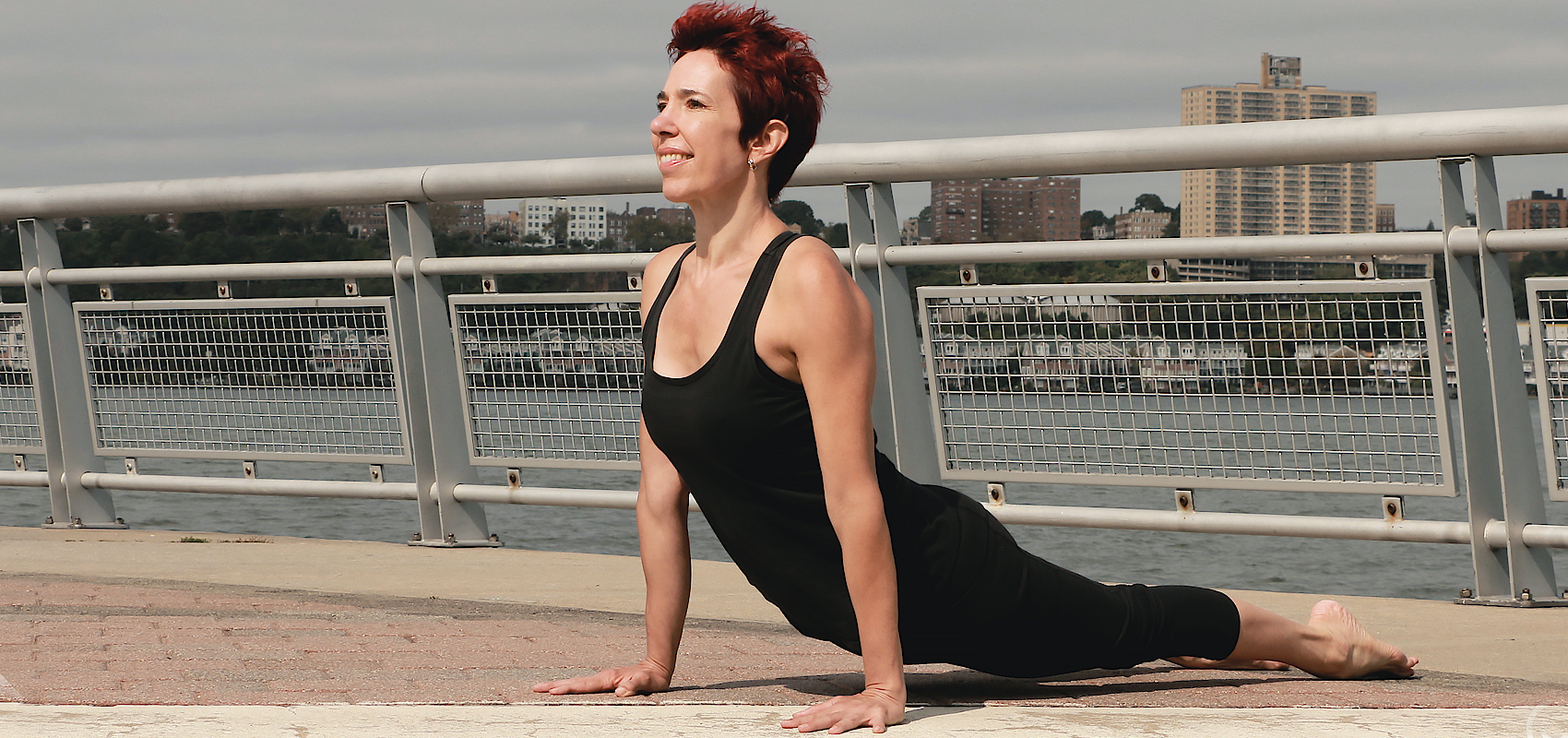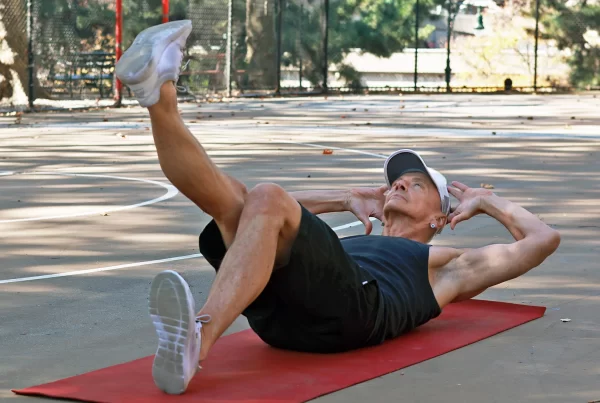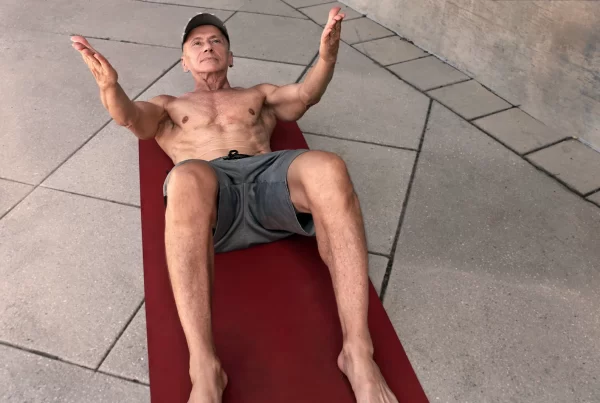Upward Facing Dog

I’ve recently rediscovered my love for Upward Facing Dog, so I figured I’d write a short blog post about it and let you in on the magic. Upward Facing Dog is one of the most fundamental poses in yoga, and you can find it in pretty much every single yoga class. That’s why it is so important to get it right and learn a bit more about the proper alignment, the benefits, the muscles involved, and how to make this pose part of your workout.
Upward Facing Dog is a great yoga pose to stretch the chest, shoulders, abs, and hips. At the same time, it strengthens the upper back, arms, and wrists. Traditionally, you can find this pose in Sun Salutations or the Vinyasa Flow, and it’s mostly practiced in connection with Downward Facing Dog. The Sanskrit name is “Urdhva Mukha Svanasana,” and just quickly… Urdhva stands for upward, mukha for face, svana for dog, and, of course, asana for pose. And while it looks like a pretty simple pose, there are a few alignment challenges and tricks.

I know many people view Up Dog as a yogi’s pose, but practicing Upward Facing Dog isn’t just for yogis. It is excellent for any athlete for a number of reasons and can help you significantly enhance your sports performance. So, let’s have a closer look at how Up Dog can bolster your fitness, whether you’re running, tumbling, dancing, rock climbing, swimming, playing football, or hitting the gym.
- My first reason for practicing Up Dog is that many sports activities require a flexible spine. So, a back that can move and open up in every direction is much more efficient, whether you play tennis, football, or tumble in acrobatics.
- Secondly, Up Dog is a great pose to stretch your quads and hip flexors, which creates a balance between the front and back sides of the legs, making every movement easier and lessening the risk of injury.
- The third benefit is that Upward Facing Dog strengthens and maintains flexibility in the wrists, especially while moving in and out of the pose. This is important for refining your fitness in sports such as baseball or tennis.
- My last reason is that the backbend opens up the rib cage, increasing lung capacity. This works to your advantage no matter what sport you engage in because it allows you to get more oxygen into your system.
And with that said, let’s check out some of the most important ALIGNMENT CUES:
– Pull your shoulders away from the ears.
– Push through the palms of your hands.
– Press through the tops of your feet and engage your legs.
– Keep your neck long and gaze forward.
– Pull the belly button towards the spine and slightly tuck your tailbone under to protect your lower back.
Most people speed through Upward Facing Dog because they feel crunchy and bunchy in it, but once you adopt a feeling of curiosity about backbends, you won’t be able to get enough of it. Plus, there are some incredible BENEFITS that Up Dog can do for you that you don’t want to miss out on:
– Upward Facing Dog energizes you.
– Opens your Heart.
– Boosts your Mood.
– Strengthens the spine.
– Reverses hunchbacks.
– Stretches your abs.
– Clears your head and makes you more alert.
– Gets things moving.
– Relieves depression.
– Gives you memory power.
Typically, you get into Upward Facing Dog on an inhalation. Take a deep breath in right now and experience for yourself how your chest lifts, your collarbones spread, and your pectoral muscles expand. If you use the breath in yoga, you will be able to accentuate Up Dog and get more out of it. Keep your breath in mind before you practice your next Upward Dog, and take a quick look at what muscles are involved that you want to pay attention to as well.
MUSCLES USED IN UPWARD FACING DOG:
Generally speaking, most of the work is done by concentric work of the extensor muscles in the thoracic spine while actively lengthening (eccentric work) the flexors in the cervical and lumbar spine.
To get the shoulders away from the ears, the scapulae have to move down. This is how most people view this movement, but rather than a depression of the scapulae, it is really a lifting of the rib cage.
But however way you look at it, it’s still the same muscles that have to do the major work, namely the pectoralis minor – a small muscle in the front of the chest under the pectoralis major – and the lower part of the trapezius – which is the large muscle in the upper back most known for lifting or shrugging the shoulders, as well as extending the head at the neck.
That being said, there are two other muscles that assist in the depression of the shoulder blades, which are the latissimus dorsi as well as the pectoralis major. However, both attach to the humerus and not the scapulae directly, and with that, they are only assisting and not the main movers.
Other muscles involved in Upward Facing Dog are the main muscles of the back, the deltoids, the quadratus lumborum, and the gluteus maximus and medius.
While Upward Facing Dog comes with a ton of benefits, you should be cautious if you are working with a back injury or carpal tunnel syndrome, as those conditions may be aggravated by this back bend. Additionally, if you are a pregnant woman, avoid Up Dog after the first trimester, as it could create too much of a strain on the lower back.
It may seem like Upward Facing Dog is a pretty simple pose, but after a closer look, you will have to admit there are so many different parts involved that you can get a total body workout from simply practicing more Up Dogs.




